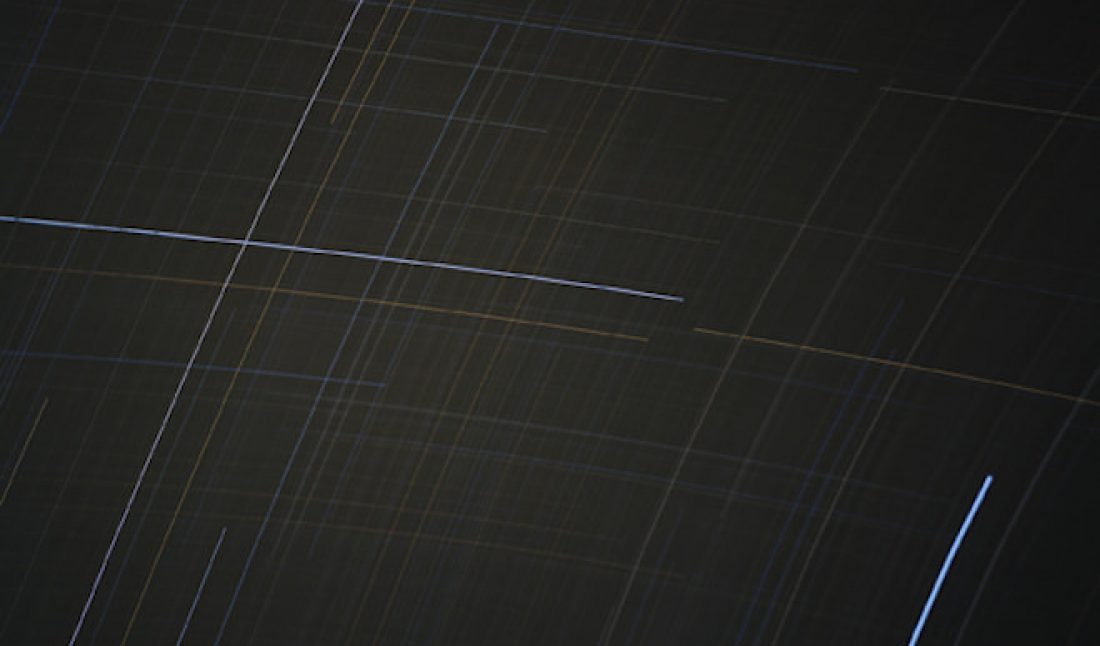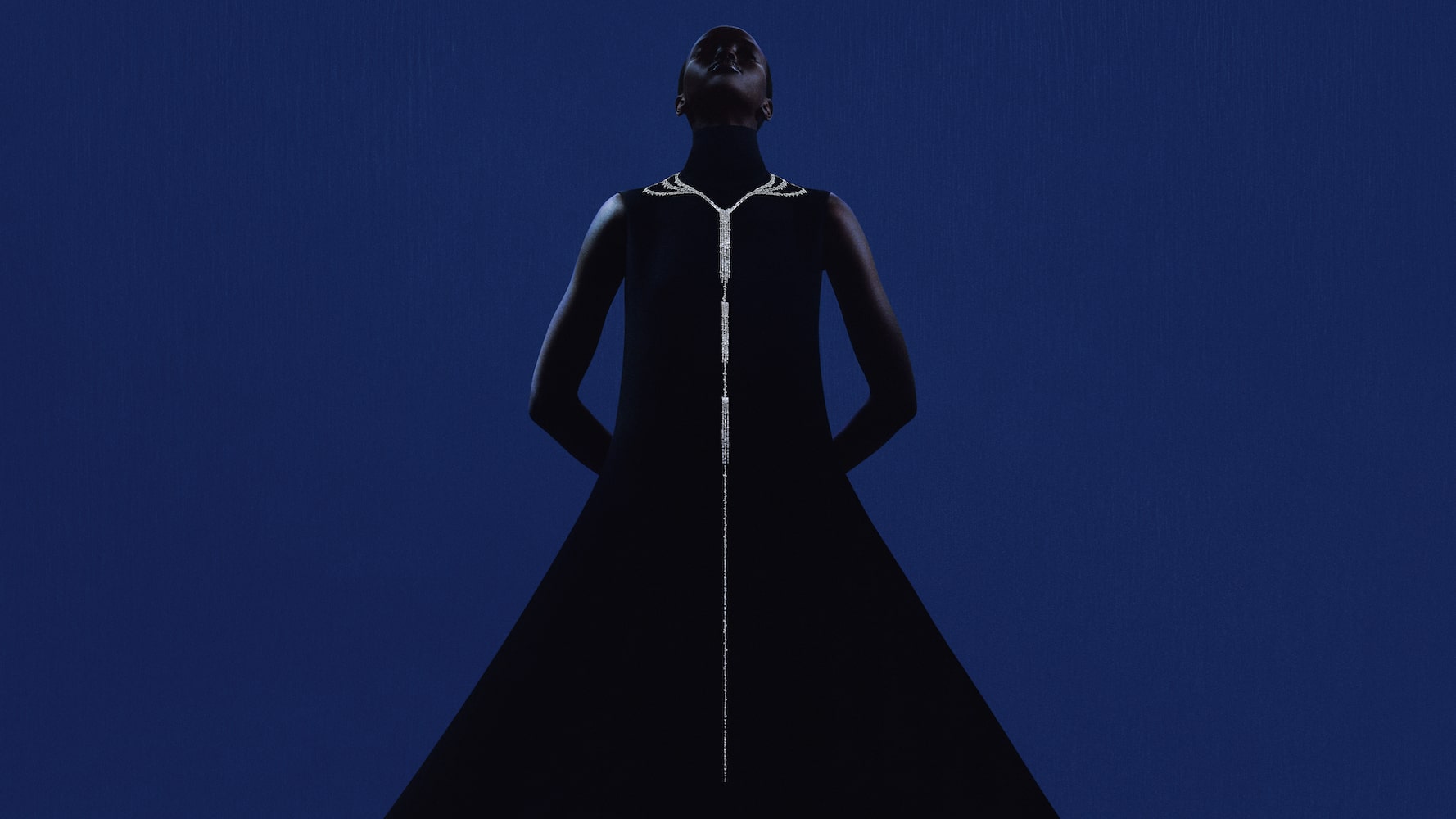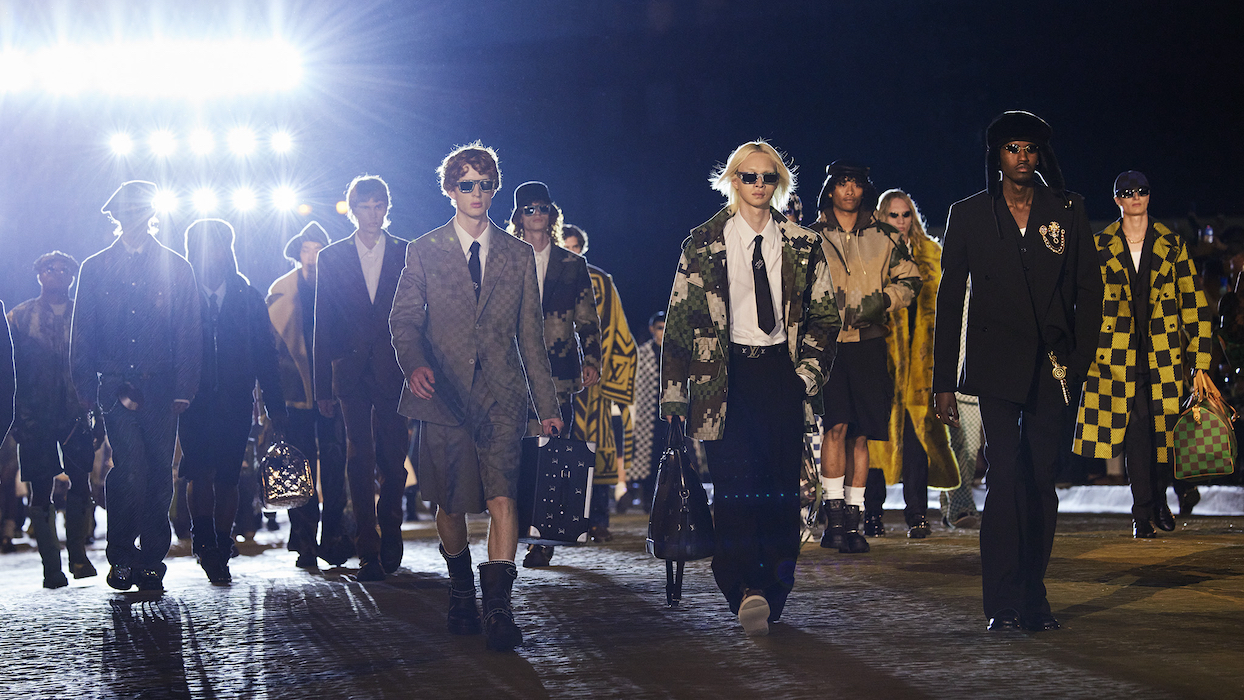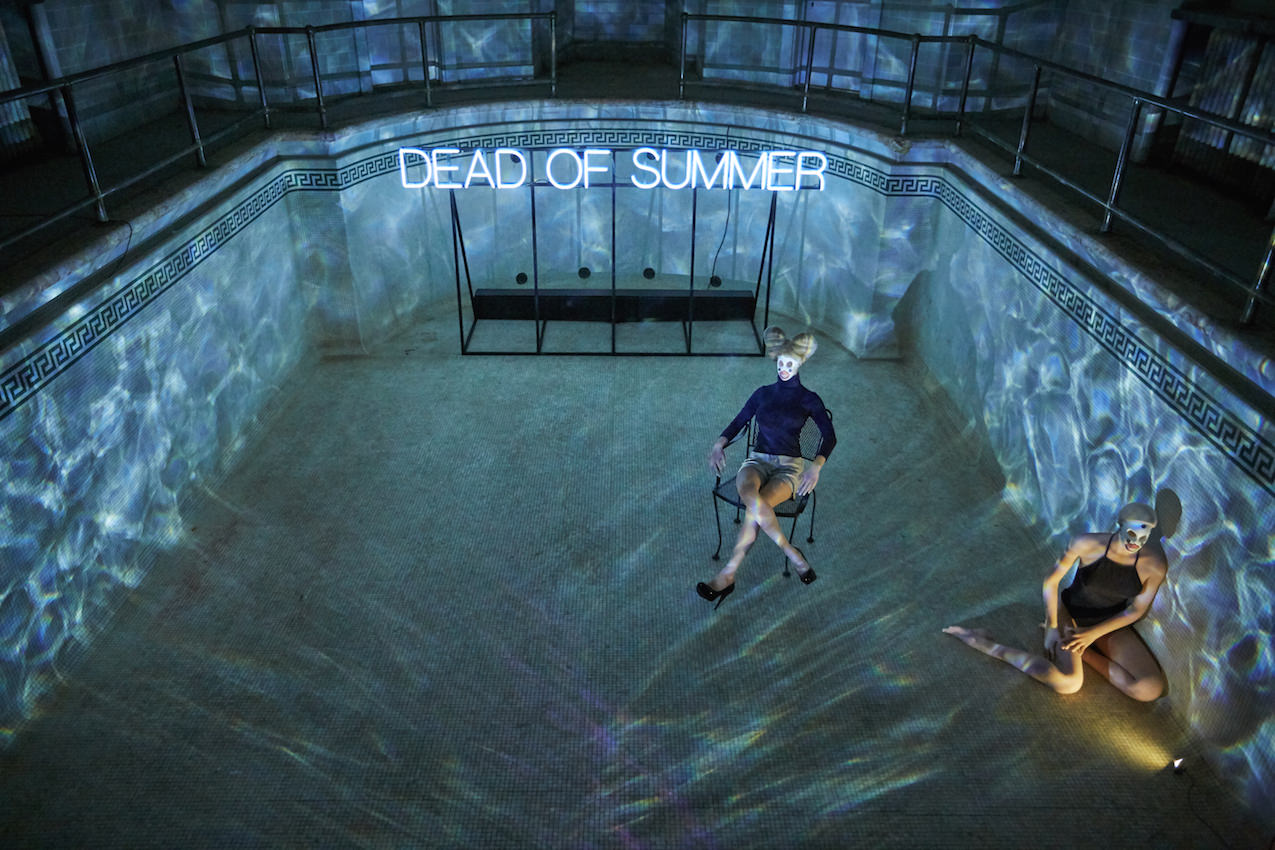Sharon Harper’s exhibition “From Above and Below” opens at the Gallery at Hermès in New York this Friday, September 19. The show of photographs comes from her recent monograph From Above and Below, which spans ten years of her practice. Harper’s work captures temporal and spatial changes of celestial subjects in order to explore the relationship between our personal perception of the natural world and how technology alters it. We spoke with the artist to learn more about her techniques and her creative goals for the future.
WHITEWALL: Could you explain a bit more about your personal photographic style? How did you first start experimenting with multiple or long exposures to capture the movement of time in your work?
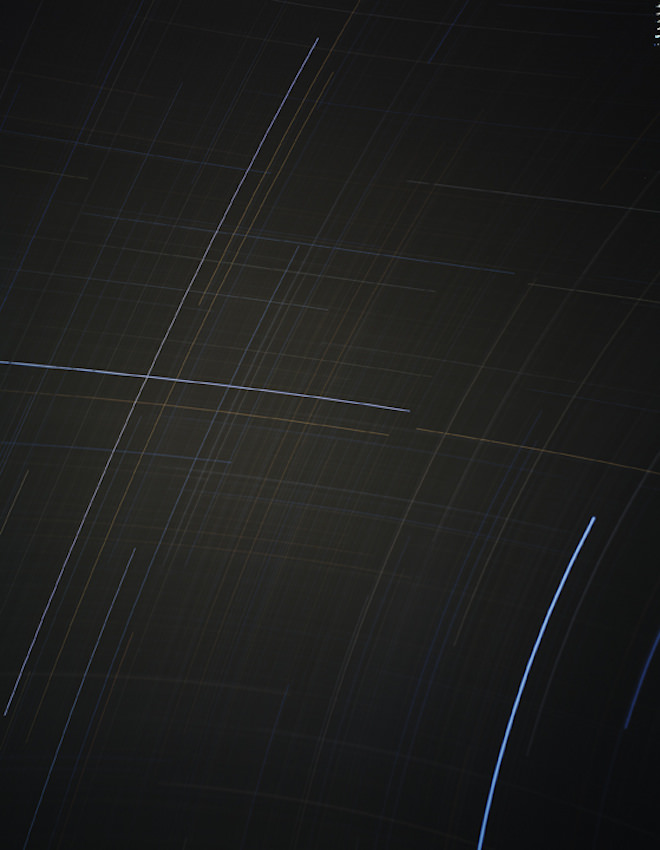 One Month, Weather Permitting, 2009
One Month, Weather Permitting, 2009 Night Sky over Banff, Alberta
September 12 – October 10, 2007
12 September 13 September
30 x 40 inches
Archival Inkjet print
SH: I had been working with photography for almost 15 years and had a really good technical grounding in the medium when I started experimenting with it. I had a good sense of what might happen with experiments but I continue to be delighted by surprises.
I had experimented before, but there is one photograph that catalyzed a working method for the “Moon Studies and Star Scratches” series. I was photographing an eclipse of the moon one night and I knew that I didn’t want to show the linear progression of the eclipse on one sheet of film. I decided to move the back of the camera between each exposure, as if filling a piece of drawing paper. When I got the film back, it showed the time that elapsed in the eclipse (Moon Studies and Star Scratches, No 2, 2003, Greensboro, North Carolina) and clearly showed the movements of the camera. I realized that if I photographed the phases of the moon each month on a single sheet of film it would compress celestial time and a marker of monthly time together.
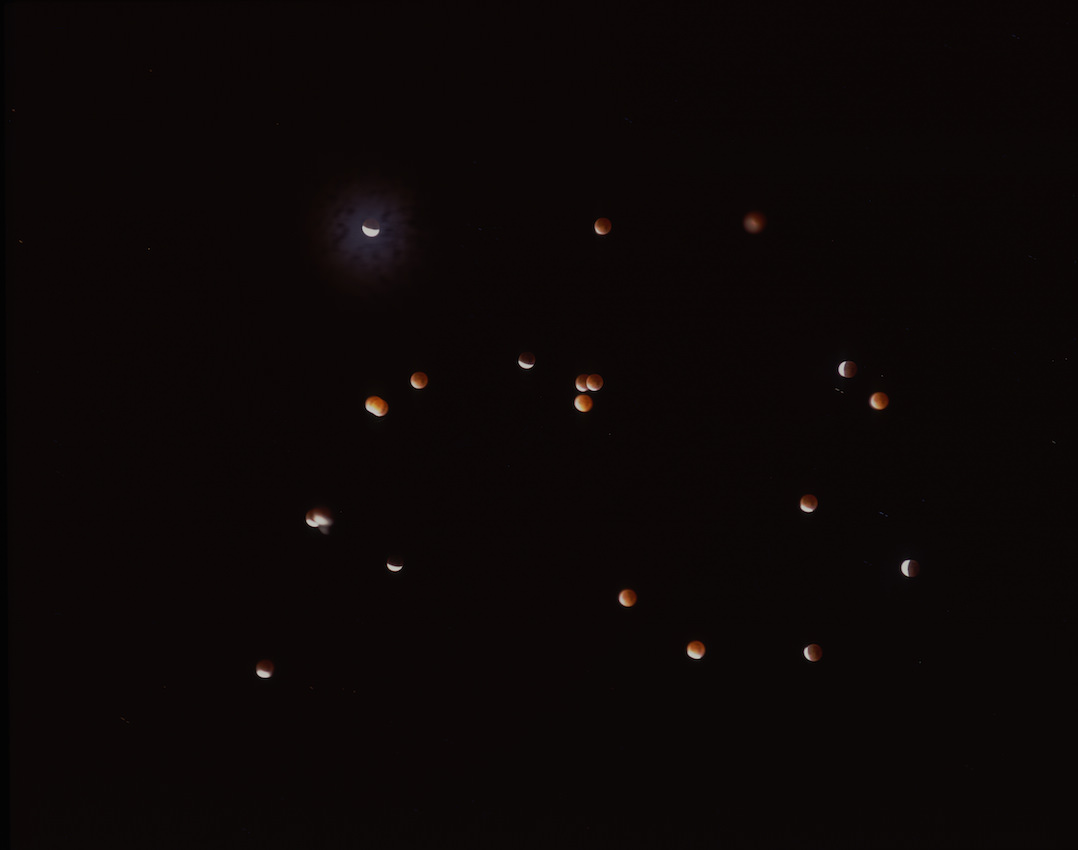 Moon Studies and Star Scratches, No. 2
Moon Studies and Star Scratches, No. 2 November 8, 2003
Greensboro, North Carolina
40 x 50 inches
Luminage photograph
I then had the opportunity at an artist residency in Wyoming to leave my camera out in a field undisturbed for long periods of time, and added the long star exposures to the process.
WW: There is something interesting about the certainty of the technological process of photography versus the creative process of photographic experimentation. How do your artistic goals affect your relationship with the camera and vice-versa?
SH: That’s a nice distinction between technical certainty and experimental processes. I find I need to be fluid in my stance toward my subject. Sometimes I am goal oriented and direct the experience in a certain way because I am after certain ideas, and at other times I need to be receptive in the moment. If I’m too focused on a certain outcome I can lose an opportunity that being receptive might provide. It’s a little like what happens on a playing field with athletes. They are continually improvising but they rely on a base of skills they’ve acquired over the years. The camera is the constant, but how it is used can change the outcome dramatically.
WW: What did you discover about the effects of technology on our perception during your documentations in Moon Studies and Star Scratches?
SH: I learned just how plastic and vast the expressive potential of photography is. I was trying to get away from the purely descriptive potential of photography. I was looking for ways to use the medium that were evocative and contained metaphors for the ideas I was interested in. When I consider the history of photography, I love the ways that our collective understanding of the medium and our assumptions about it have continually changed and continue to evolve.
WW: In the upcoming year, you plan on traveling the United States to photograph protected parklands for your fellowship from the John Simon Guggenheim Memorial Foundation. What do you hope to explore more in this project that you haven’t in previous works?
SH: There are a number of things that interest me in this project that provide some departure and some continuity with my previous work. I’ve been interested at the different histories of specific landscapes, and have been noticing the types of technologies that are specific to a place and time that may develop in a place or be part of the history of that place.
For instance, the Wright Brothers were drawn to the Outer Banks National Seashore in North Carolina because of the winds and gentle hills there. The landscape influenced their ability to fly. In the West I’ve been interested in the water use and water sources in the parks. My photographic responses to these places are sometimes documentary in nature, and sometimes poetic.
“Sharon Harper: From Above and Below” is on view through November 17, 2014 at the Gallery at Hermes, 691 Madison Avenue, New York.







